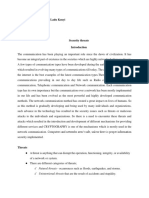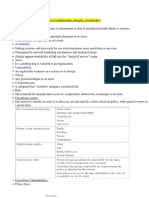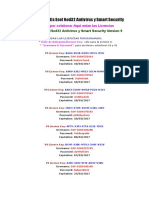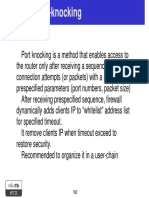0% found this document useful (0 votes)
43 views9 pagesNetwork Security Notes
Network security aims to protect data and resources from unauthorized access and various threats, focusing on confidentiality, integrity, and availability. Key security issues in the TCP/IP suite include sniffing, spoofing, man-in-the-middle attacks, and denial of service attacks, each with specific impacts and mitigation strategies. Understanding these vulnerabilities and implementing appropriate defenses are essential for safeguarding network infrastructure and data.
Uploaded by
Sangamesh BhombeCopyright
© © All Rights Reserved
We take content rights seriously. If you suspect this is your content, claim it here.
Available Formats
Download as DOCX, PDF, TXT or read online on Scribd
0% found this document useful (0 votes)
43 views9 pagesNetwork Security Notes
Network security aims to protect data and resources from unauthorized access and various threats, focusing on confidentiality, integrity, and availability. Key security issues in the TCP/IP suite include sniffing, spoofing, man-in-the-middle attacks, and denial of service attacks, each with specific impacts and mitigation strategies. Understanding these vulnerabilities and implementing appropriate defenses are essential for safeguarding network infrastructure and data.
Uploaded by
Sangamesh BhombeCopyright
© © All Rights Reserved
We take content rights seriously. If you suspect this is your content, claim it here.
Available Formats
Download as DOCX, PDF, TXT or read online on Scribd
/ 9























































































